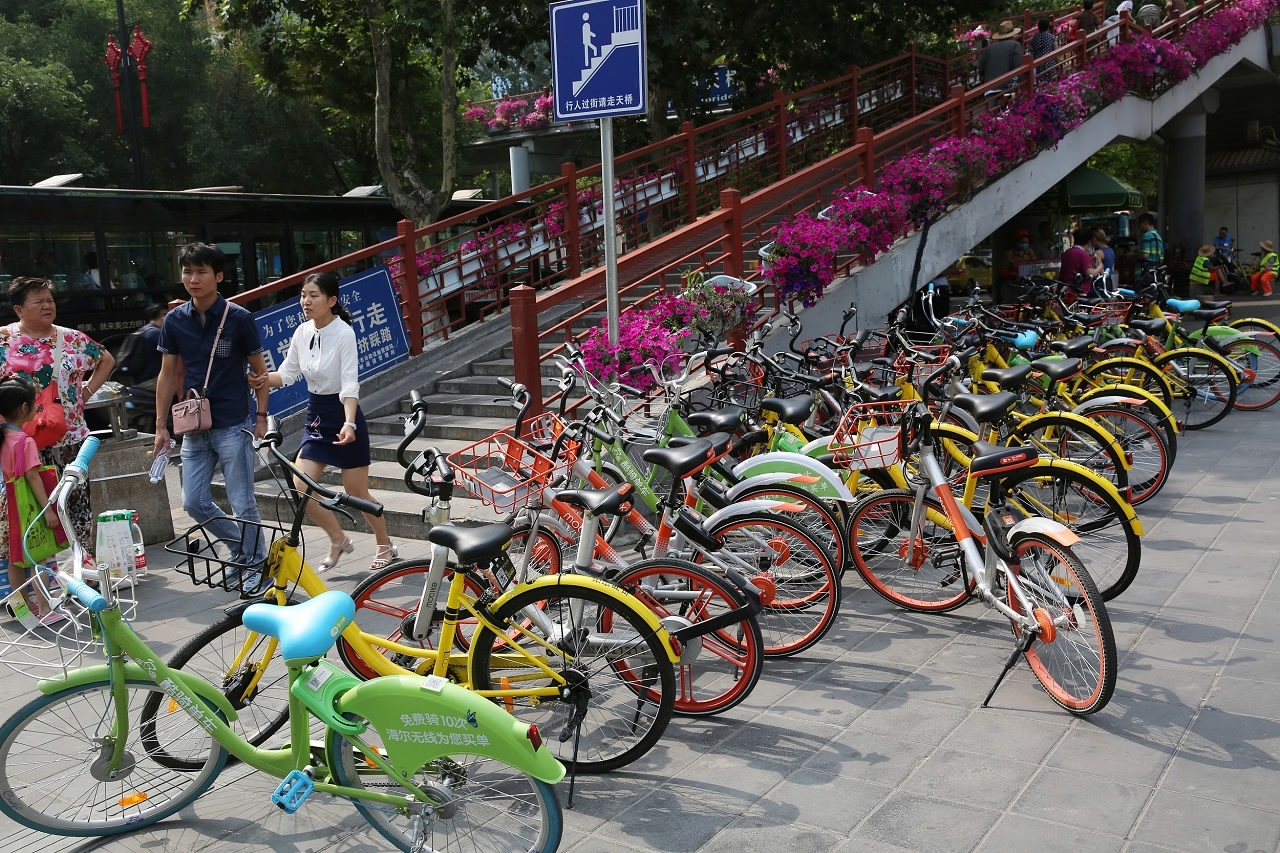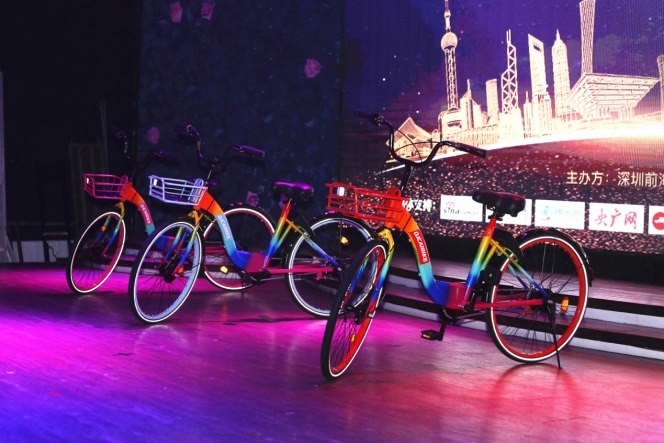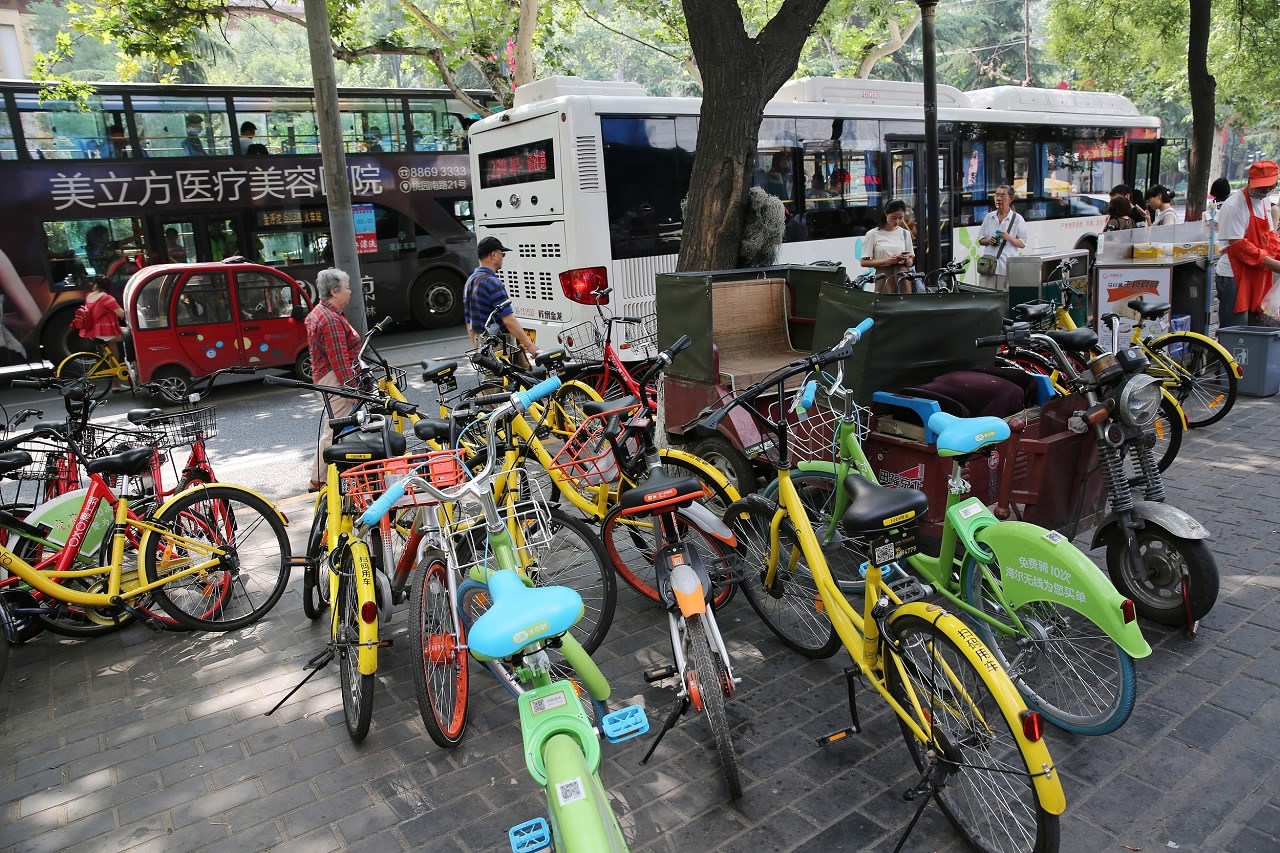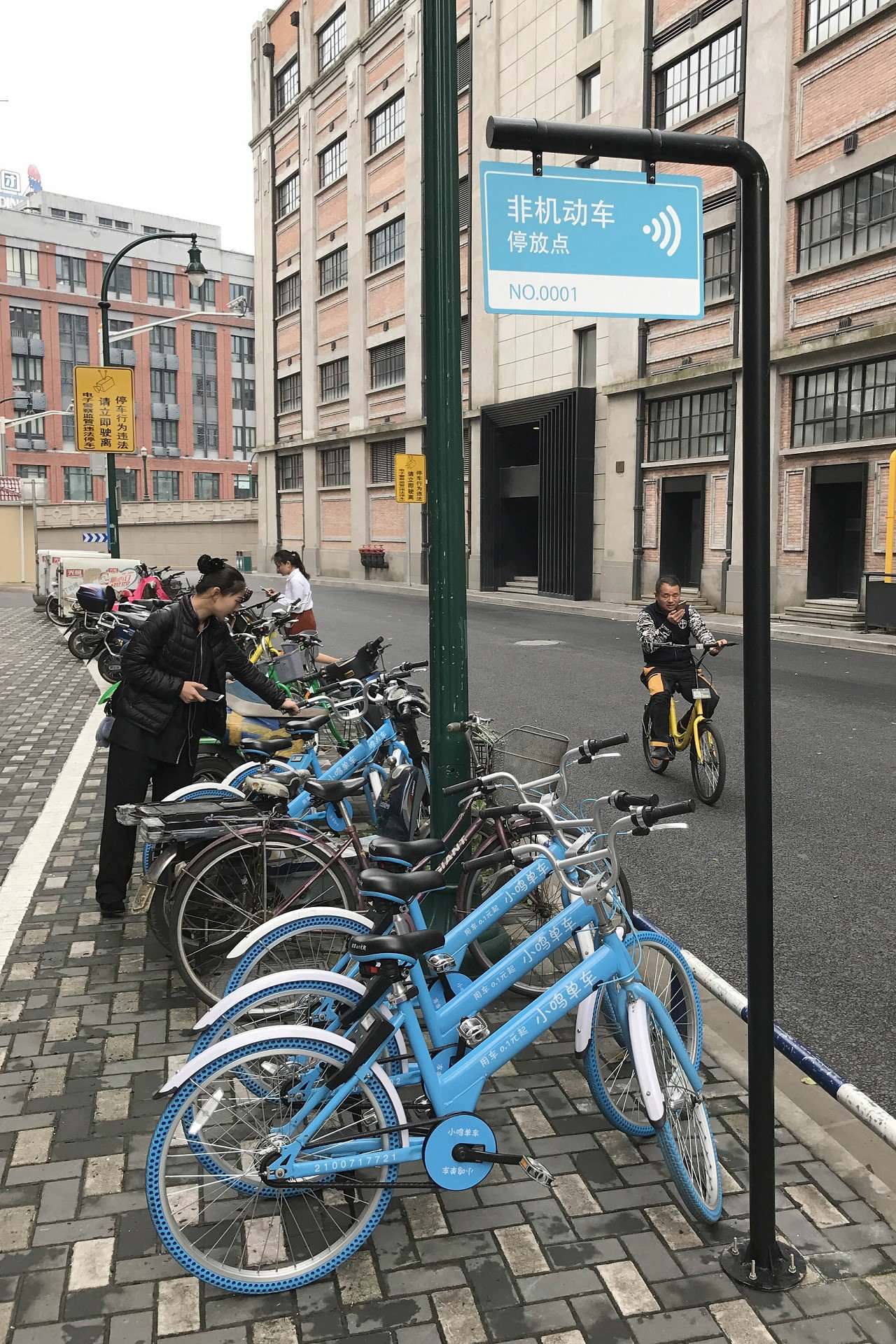
Tech & Sci
20:18, 18-Jun-2017
Rainbow shared bikes hit Chinese streets, paint positive outlook for neat parking

Bike-sharing services have seen meteoric rise in China, and with so many companies joining the booming sector, bicycles ready for public use are popping up everywhere, and sidewalks are turning into a sea of colors.
Yellow rides belong to ofo, orange was claimed by Mobike, BlueGoGo has (you got it right!) blue bikes, green and (tacky) golden are reserved for Kuqi and cyan is UniBike's – companies have multiplied, and so did the colors they have monopolized. There were at least 25 bike-sharing companies in China by the end of 2016, each of which choosing a unique color for its brand.
Science says color combinations are infinite, but let’s be real – we can only mix and match so many shades before results start looking the same.

Shared bikes of different colors parked along a street in Xi'an on June 17, 2017. /VCG Photo
Shared bikes of different colors parked along a street in Xi'an on June 17, 2017. /VCG Photo
But that's not a problem for new-comer QicaiBike, which is deploying rainbow-colored cycles on the streets of China.
On Saturday, the company hosted a press conference to mark the launch of its service. Luo Haiyuan, CEO of QicaiBike, announced that the initial stage will cover five Chinese cities, but the very colorful rides will soon cover 100 cities nationwide.
The body of bikes, called "Terminator 7," displays a rainbow ombré, with wheels featuring one of seven color variations, namely red, orange, yellow, green, cyan, blue and purple.

The "Terminator 7" shared bike model displayed at QicaiBike's launch on June 17, 2017 /QicaiBike Photo
The "Terminator 7" shared bike model displayed at QicaiBike's launch on June 17, 2017 /QicaiBike Photo
The wheels will also light up at night – a feature that can help avoid accidents, the company said.
Park it right
Apart from the dazzling appearance of the bikes, QicaiBike also finds its unique characteristics in the functions it incorporates.
The company has promised to solve the chaos scenes ensuing from randomly parking shared bicycles by introducing a "1+1" parking pattern.

Shared bikes chaotically parked along a road of Xi'an. /VCG Photo
Shared bikes chaotically parked along a road of Xi'an. /VCG Photo
The company promised to cooperate with traffic police and comply with specific parking spaces equipped with "virtual outlines" for users to place their bikes. If the cyclist fails to park their vehicle correctly, placing the bicycle outside the preset boundaries, their ride cannot be terminated, and the "mileometer" will keep running, increasing the fees until the bicycle is properly parked.
The fences are not actual barriers blocking pedestrians' way, but areas marked digitally by the traffic police.

The first "virtual barriers" are being tested in Shanghai, marked as "parking area for non-motorized vehicles," in April 2017. /VCG Photo
The first "virtual barriers" are being tested in Shanghai, marked as "parking area for non-motorized vehicles," in April 2017. /VCG Photo
The other part of the "1+1" pattern is composed of company-specific parking zones. In addition to the virtual spots, QicaiBike promised to provide parking spaces that are exclusive for their own bikes.
Users will receive coupons if they keep good parking habits, the company said.
Bike-sharing bubble?
More and more color options for shared bikes have raised questions about the so-called "bike-sharing bubble." Are there too many bikes in bicycle-phile China?
QicaiBike's answer is "unlikely," basing their answer on statistics from TrustData.
TrustData, which describes itself as the largest online big data monitoring platform, issued a report about China's shared bike users during the first quarter of 2017. The document said there is still much potential for growth of bike-sharing services, particularly in middle and small Chinese cities.

People using shared bicycles to attend a music event in Xi'an on May 13, 2017. /VCG Photo
People using shared bicycles to attend a music event in Xi'an on May 13, 2017. /VCG Photo
Monthly active users in March reached 20 million people, with a month-on-month growth of more than 100 percent, the report showed.

SITEMAP
Copyright © 2018 CGTN. Beijing ICP prepared NO.16065310-3
Copyright © 2018 CGTN. Beijing ICP prepared NO.16065310-3